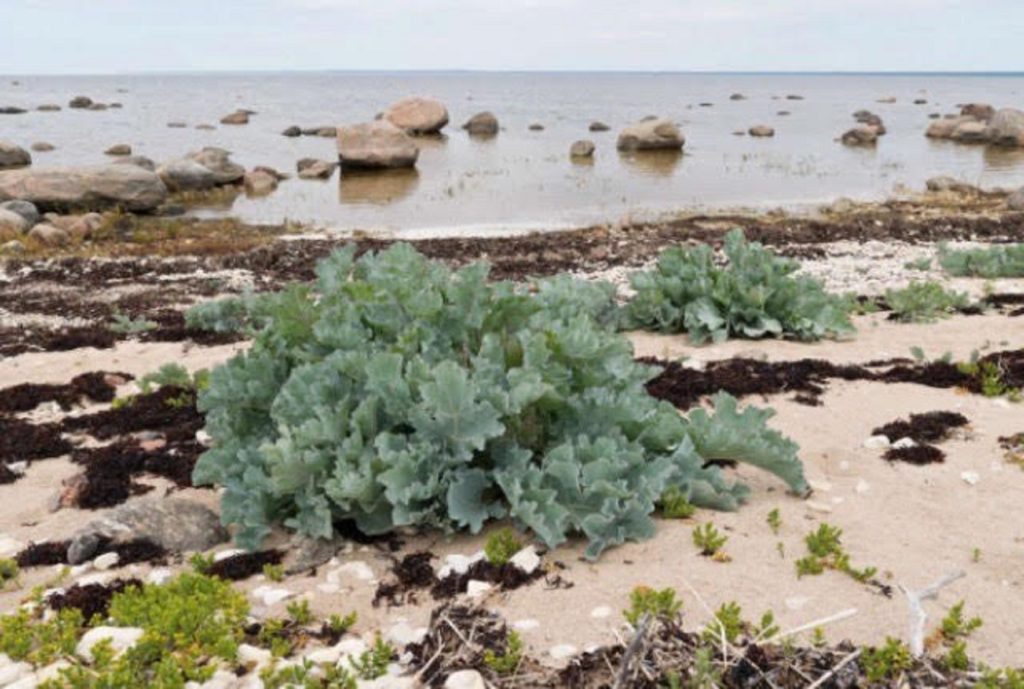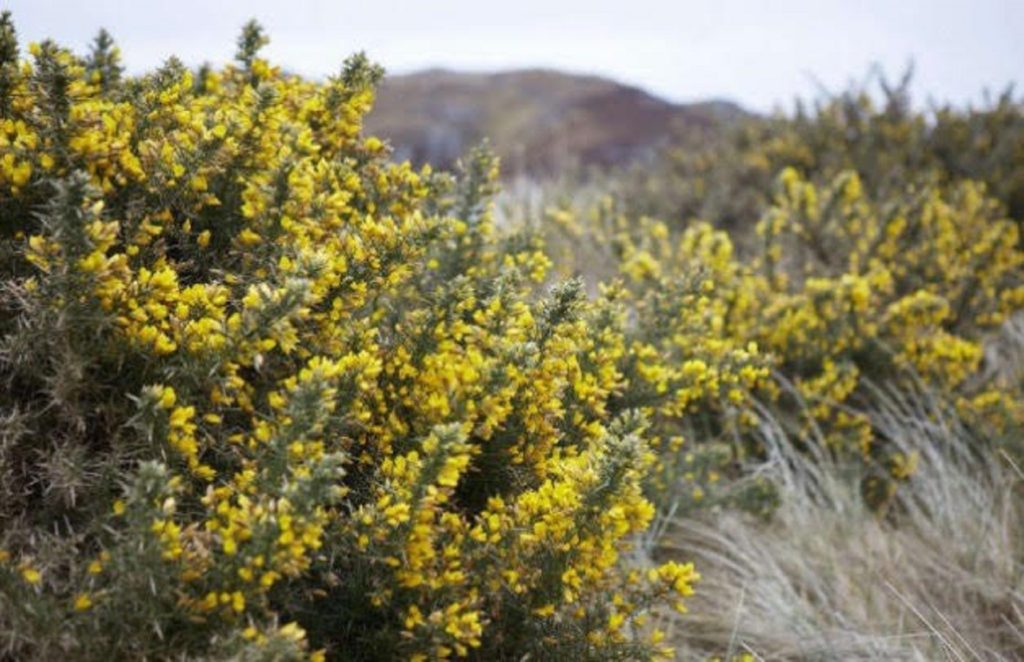
Being someone who grew up and spent a great deal of my U.S. Coast Guard career in the Pacific Northwest I got to see a lot of the native coastal culture which had deep connections with a certain mammal of the seas. From art to ceremonies and more you will find the Orcas incorporated into them. I myself got to witness them in the wilds of the magnificent Salish Sea, which I will be discussing that sea later on here. But before I go on I need to just say that even though the Orca has the common name “Killer Whale” I must say it is a name I personally do not like using but it will be mentioned in sited articles during this post. Orcas are not even a Whale at all but the larges member of the Dolphin family (Delphinidae). Killers? Well yes they are magnificent predators but that is nature. I find Orcas to be so special in many ways and unfortunately they are an endangered species but the good news is measures are in place to not only help preserve them but to allow in hopes that their population grows and flourishes. So with that said let us dive into the world of the Orcas.
Get to know the Orca
Orcas, also known as killer whales, are among the world’s most easily recognized marine mammals. The largest member of the dolphin family, orcas are highly intelligent and social animals, spending their lives in groups or pods where they hunt together and share responsibility for raising young and taking care of the sick or injured.
Adult orcas have shiny black backs, white chests and patches of white above and behind their eyes. They have paddle-shaped pectoral fins and tall triangular dorsal fins. Their distinct coloring mean they are easy to identify and rarely confused with other dolphins or whales. Orcas vary in size depending on where they live. Adult males are larger than adult females, with males reaching 32 feet (10 meters) in length and females growing to 28 feet (8.5 meters).
Found in every ocean on the planet, orcas are likely the most widely distributed mammal in the world, next to humans. There are three distinct types of orcas recognized in the eastern North Pacific Ocean—transient, resident, and offshore. Residents live close to shore in large pods of about 10 to 20 individuals and feed primarily on fish. Offshore orcas are similar to residents, but are distinguished by their smaller overall size and rounded, nicked fins. Transient orcas live in smaller groups of about three to seven individuals and spend their lives out at sea where they prey on seals, sea lions, and other dolphins (which, strangely, are the same animals that resident orcas like to swim and play with). All three types of orca have genetic differences and do not mingle or interbreed. SOURCE
Over the following decade, live display transformed views of Orcinus orca. The public embraced killer whales as charismatic and friendly, while scientists enjoyed their first access to live orcas. In the Pacific Northwest, these captive encounters reshaped regional values and helped drive environmental activism, including Greenpeace’s anti-whaling campaigns. Yet even as Northwesterners taught the world to love whales, they came to oppose their captivity and to fight for the freedom of a marine predator that had become a regional icon.
Orcas in popular culture
Many ancient civilizations knew them well. The Roman writer Pliny the Elder, who died in AD 79, describe them as huge animals enemies of the whales. Historically, for the native peoples of North America sighting of killer whales is common, so they developed an interesting mythology about them. For example, in the beliefs of the Kwakiutl and Nuu-chah-nulth orcas acquire a relevant meaning for hosting the souls of their chiefs who have died.
Many ancient cultures show great respect for killer whales and are present in their culture and myths. This concept is a bit different in the actual cultures, as they are tagged as fierce whales and highly dangerous creatures. Although for a long time, they had a bad reputation in recent times this has been changing.
The Inuit people today know a lot about orcas. They can identify them and know what they eat, but this is because they live close to them. By contrast, many of today’s Western societies acquire this knowledge through films, literature and television. SOURCE

Ten facts about orcas (killer whales)
- Orcas are the largest member of the dolphin family.
- A male orca can be nearly 33 feet (10 meters) in length and weigh around 22,000 pounds (10,000kg).
- Orcas are highly intelligent and able to coordinate hunting tactics.
- Female orcas are thought to live to 80 years of age or more.
- The dorsal fin of a male orca is up to 6 feet (2 meters) tall.
- Orcas are extremely fast swimmers and have been recorded at speeds of up to 33.5 mph (54 kph).
- A wild orca pod can cover over 99 miles (160 kilometers) a day, foraging and socializing.
- They were give the name “killer whale” by ancient sailors who saw them preying on large whales.
- Orcas are still hunted in some countries, such as Greenland.
- Different kinds of orcas are called “ecotypes”. They hunt specific prey and live in different parts of the world. SOURCE
Folklore and Native Culture
The Woman Stolen by Killer Whales (Tahltan)
A man was out fishing and drying halibut, and his wife helped him.
One day he felt something very heavy on his hook and could not pull it up. He tied the line to the thwart of the canoe and paddled ashore. With much trouble he managed to land the fish on the beach.
He called on his wife to kill it quickly, and she dispatched it with her knife. She cut it up and hung it up to dry, as is done with halibut. They did not know what kind of a fish it was. It was quite strange to them, but they thought it might be good food. When the woman had finished her work, she went to the edge of the water to wash her hands.
As soon as she put her hands into the water, something seized them and pulled her underneath the sea. She had been taken by the Killer-Whales who had come to have revenge on the man for killing their friend. Continue reading HERE.
In Inuit folklore the Akhlut is an orca spirit that takes the form of a gigantic wolf or a wolf-orca hybrid when on land.
It is a vicious, dangerous beast that ventured onto land in order to hunt humans and other animals. Its tracks can be recognized because they are wolf tracks that lead to and from the ocean, indicating that the creature is waiting for prey under the water nearby.
Often, dogs seen walking to the ocean or into it are considered one of these malevolent beasts. Little is known of this spirit other than that can transform between and orca and/or wolf. SOURCE
Orcas in Haida Culture
The Haida myths and legends about killer whales tells how they are supernatural beings and how they basically ruled the underworld. The underworld in Haida culture refers to the ocean and everything in it. The killer whales had their own villages equivalent to the Haida villages on the surface with longhouses lined up with each other. The stories the Haida have about killer whales are endless, many of them end up being about a killer whale that stole a woman from the shore because he wanted to bring her back to his village and marry her.
There are also stories about the origins of killer whales and stories of their strength. Some say killer whales descended from coastal wolves. There was a story about a man with two wolf pups who, as they grew bigger and bigger, would swim out to sea to hunt whales. They would bring whales back for dinner everyday until one day a heavy fog came in and the wolves became lost at sea, eventually turning into killer whales.
There’s another story about how the supernatural beings were holding a contest. The island of Haida Gwaii was sinking, and to see who would be given the job of holding it up, they needed to see who the strongest. In this contest was a boy who had the ability to wear the skin of others. The contest was to see who can lay on a bed of hot coals the longest, the boy knowing the killer whales skin was the toughest, decided to cheat he took the killer whales skin and wore it when the supernatural beings weren’t looking, he won the contest. It is said he now holds up Haida Gwaii on a totem with his little pet ermine, when there is an earthquake on Haida Gwaii it is said to be the ermine running up and down the pole. Continue reading HERE.
Orca Symbolism in Indigenous Cultures of the Pacific Northwest

The Orca, also known as the Killer Whale or Blackfish, possesses a profound significance in the rich tapestry of mythology and folklore of the Indigenous peoples of the Pacific Northwest Coast of North America.
Amongst many tribes in the region, such as the Tlingit, Tsimshian, and Kwakiutl, the Orca is revered as a clan animal and serves as a cherished clan crest. Its powerful presence is an enduring symbol of the deep-rooted cultural traditions and profound connection to the natural world that have shaped the identity of these communities for generations.
The Orca is a venerated medicine animal, embodying an enduring symbol of strength and power. In addition, the Orca is regarded as a cherished protector of humanity among the Tlingit people. Despite their status as skilled whale hunters, the Tlingit do not hunt the Orca, acknowledging its esteemed role as a guardian of their communities.
For the Kwakiutl tribes, the Orca held an even more poignant significance – it was believed that upon the death of a seafarer, their soul would transform into an Orca, much like forest hunters were said to become wolves. This enduring belief is a testament to the deep spiritual connection that has long existed between humans and these majestic creatures of the sea.
To catch a glimpse of an Orca off the coast is to bear witness to a poignant and meaningful omen. In some indigenous cultures, the Orca is revered as a messenger, a spiritual entity transcending the physical realm to offer guidance and wisdom to those still bound to this mortal plane. To some, the sighting of an Orca may even signify a departed chief or tribe member reaching out from beyond the veil to communicate with and protect their loved ones still walking the earth. Continue reading HERE.
Further Symbolism and Meaning of the Orca
Shamans suggest the Orca or Killer Whale knows the secrets to exquisite romance, long life, peaceful interactions, community cooperation, and perhaps a well-protected family. The Orca is a Whale and the largest member of the Oceanic Dolphin family, so they have many common characteristics, including mischief, curiosity, and intellect. The Orca brain is sophisticated, seeing the aquatic beast is the second largest among Sea Creatures.
Orcas is diligent when working within their pod, raising their calves with the meticulous care. The Orca pods are interdependent and team-oriented. Orcas travel together, hunt together, and play together. Life within the pod is social and friendly, which is one message the creature delivers to humankind: The importance of learning how to live happily together so that everyone benefits.
Orcas have an intimate connection with the Feminine principal of the Universe. They are matrilineal. A female leads each pod, teaching the young everything they need to know for survival. Should a mother in the pod pass away, the sister, grandmother, or next female in line steps into the role; this gives Orca various Yin energetic signatures including nurturing, education, bonding, comfort, facilitation, and endless patience. Even though people call them Killer Whales, the Orca Animal Guide is a gentle creature who takes an interest in those who cannot help themselves. Continue reading HERE.
Orcas of the Salish Sea
The Salish sea for me has a huge importance for me just from fond memories of traveling that sea in my career but on a spiritual level as well. The Salish sea is a marginal sea of the Pacific ocean found between northwest Washington and British Columbia that holds an amazing variety of diverse Marine and Coastal wildlife which certainly includes the Orca. The Salish sea itself is very sacred to the Native cultures who reside there as well.
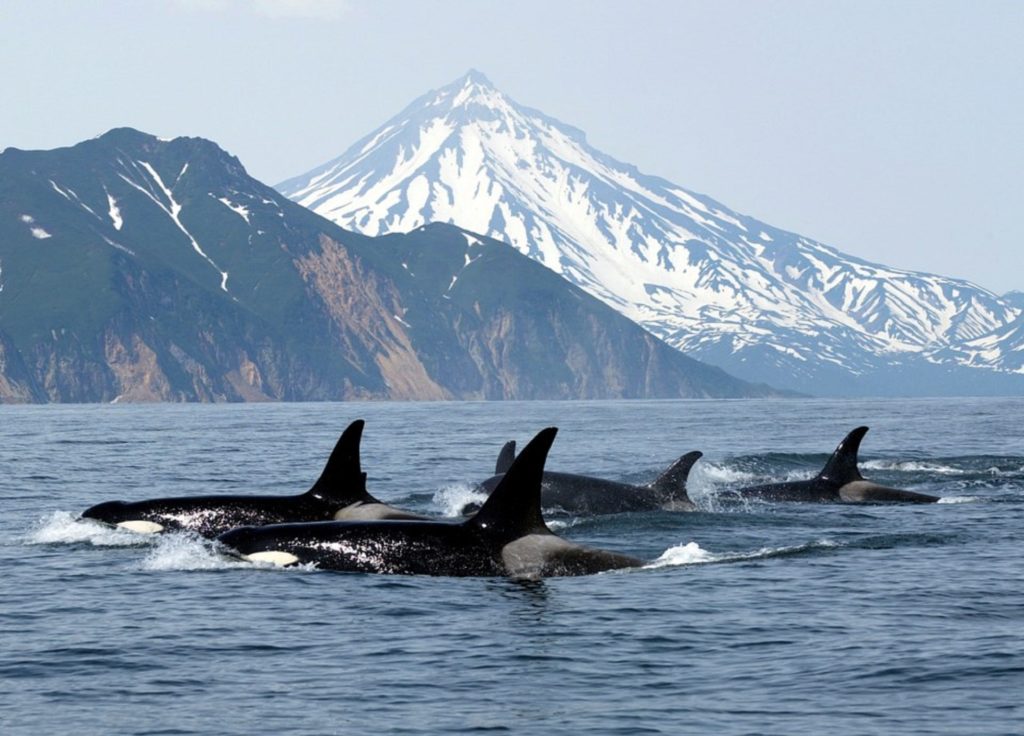
Orcas have been a symbol of the West Coast for many thousands of years. They they are an important part of the culture of many Indigenous peoples, belief systems, symbolism, art and storytelling.
The orca is a symbol often centered around luck, compassion and family. Orcas are known to some Indigenous communities as the guardians of the sea. To some people, orcas represent the strength of love and the bonds of family because of their strong group behaviour.
Indigenous peoples and orcas have lived in harmony in the Pacific Northwest since time immemorial. It is important to look to Indigenous communities for knowledge and understanding of the history, location, and behaviours of the Pacific Northwest’s orca populations, as well as to their leadership, when developing protection and recovery actions. SOURCE

The Pacific Northwest is home to three Orca ecotypes
- Resident Orcas, of which there are two distinct populations
- Southern Residents: as of September 2019, 73 individuals (population decreasing)
- Northern Residents: 240-260 individuals (population increasing)
- Bigg’s orcas, also known as transients: approx. 400 individuals (population increasing)
- Offshore orcas: approx. 300 individuals (population trend unknown) SOURCE
The Orca People (qalqaləxič)
Coast Salish peoples, here for thousands of years before settlers arrived, shared a strong belief in the existence of “myth age,” when beings sharing both human and animal qualities roamed the earth. According to legend, a Changer (dukʷibəɬ) transformed beings into animals, giving the native people the essential elements of their culture.
The killer whale or orca is important to the Tulalip Tribes. As the Snohomish legend goes, if a killer whale approaches their canoe, they will greet it with these words: “killer whale, killer whale, your ancestors were also my ancestors.”
A long-told Tulalip story says there were two brothers, famous seal hunters, who went to live in the ocean and became killer whales. Later, when the Tulalip people had been starving, they were relieved to see the salmon arrive.
Suddenly, seals arrived, too, and began devouring the salmon. Remembering their seal-hunting ancestors, the qalq̓aləx̌ič, they called them for help. The killer whales heard the call and arrived to kill the seals, saving the salmon and the Tulalip people from starvation.
“Tulalip” comes from the Lushootseed word dxʷlilap (far towards the end) referring to the wide berth cut by canoes entering Tulalip bay, eight miles north of Mukilteo, to avoid running aground. Tulalip tribal members are the direct descendants of the Snohomish, Snoqualmie, Skykomish, and other allied tribes and bands signatory to the 1855 Treaty of Point Elliott, which was signed here. SOURCE
Illustrated with stunning photos, this picture book introduces young readers to the orcas humans first fell in love with. The members of J pod live in the Salish Sea, off the coast of Washington and British Columbia. Moby Doll was the first orca ever displayed in captivity, Granny was the oldest orca known to humanity, and Scarlet was the orca humans fought to save.
Orcas of the Salish Sea Written By Kaori Pi
The black dorsal fin slices up slowly with barely a ripple. First it rises about a foot above the surface. Like a submarine’s periscope, it travels straight ahead for twenty feet until the mighty stroke of the adult male’s flukes lift six feet of dripping, wavy fin into the air. A huge torpedo-shaped head pushes out just far enough for a loud burst of air out the blowhole and a quick suck to refill the orca’s lungs before it arcs silently back into the depths.
It’s J3, a male over 40 years old, rising to breathe beside his family. His mother’s sister plows up next to him to heave an explosive blow, followed by three more generations of J pod orcas, all closely related and inseparable their entire lives. J3’s age is documented from photos taken in the first years of demographic field research in the mid-1970’s. Several females are much older, however, including two, J2 and K7, both estimated to be over 90 years old in 1995.
Wispy clouds of vapor linger high over their heads as they pass a hundred yards from Lime Kiln Lighthouse at Whale Watch Park. One suddenly twists in tight circles pursuing a large salmon. The others dive into the kelp, rubbing the long soft strands along their backs and into the notches of their flukes as they check for salmon hiding in the shadows. Above them the snow-whitened Olympics stand watch over this vast inland sea, glowing with red-orange hues in the early morning sun. Continue reading HERE.
In Conclusion
So in conclusion as you have seen during this blog post there is a tremendous amount of information regarding these amazing Wolves of the Seas and I could have gone on further but I felt ending the Blog with the Orcas of my homeland felt suiting. Even as I wrote and put together the sources for this one I for a moment felt like I was back home which is something special for me. I can only hope that someday I return home to the Pacific Northwest and once again can take to sea and experience with my own eyes the beauty of the Orcas.
Further Resources
Spirits of the Coast: Orcas in science, art and history
Orca guide: diet, how they hunt, and what they’re related to
9 Reasons to Be Obsessed with Orcas
Native American Killer Whale Mythology (Orca or Blackfish)



